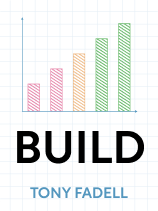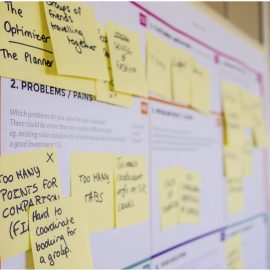

This article is an excerpt from the Shortform book guide to "Build" by Tony Fadell. Shortform has the world's best summaries and analyses of books you should be reading.
Like this article? Sign up for a free trial here.
Are you just starting out—and wondering where to start? How do you choose a company to work for? How long should you stay there?
In Build, entrepreneur Tony Fadell shares his wisdom for succeeding in every stage of your career. When you’re just starting out, he says, you need to figure out what you want to do, work for the right company, pay attention to the broader goals of the company, and know when to quit.
Keep reading for Fadell’s advice on how to start your career.
Tip #1: Figure Out What You Want to Do
Fadell shares four tips on how to start your career. The first thing you need to do is figure out what you want to do. This doesn’t entail a specific salary or position. Rather, ask yourself, What “mission,” or objective, inspires me to learn? For example, Fadell’s objective was to make handheld computing devices, which inspired him to learn everything he could about making them. Knowing what you want to accomplish will help you make better career decisions.
(Shortform note: If you don’t have a clear objective, The Defining Decade author Meg Jay recommends that you seek out experiences that will help you build “identity capital”: the collection of things you’ve done long enough or well enough that they become part of who you are. For example, if you’re interested in filmmaking, seek out an entry-level job at a film production company instead of one at a coffee shop.)
Tip #2: Work for the Right Company
Second, Fadell recommends that you work for the right company. It should be working toward an objective similar to yours, have an original solution to an everyday problem experienced by the masses, and have the technical know-how to successfully create the product they’re promising. Ideally, the experts in your field will be working there and the company is small enough that you can learn from them—fewer than 100 people is ideal. If a company fits all these criteria, don’t worry about your exact position. You can always switch internally within the company, but you can’t manufacture passion for an objective.
(Shortform note: Fadell’s recommendations for finding the right company don’t apply to every industry. For example, a writer could work at a small publication whose mission they believe in and learn from the experts in their field—but that publication likely won’t be creating an original solution to an everyday problem experienced by the masses. If Fadell’s recommendations don’t apply to your industry, look for a job you’ll love. In 168 Hours, Laura Vanderkam argues that such a job will have four characteristics: It’s work you enjoy, it’s work that challenges you, it gives you some autonomy, and it provides a supportive environment.)
Tip #3: Notice the Company’s Broad Goals
Third, Fadell suggests that you pay attention to the broader goals of the company. Instead of focusing exclusively on your short-term goals, occasionally shift your perspective so you can assess how your job fits into the company’s long-term goals, how you can do your job better, and notice any potential landmines that could harm the company. To do so, talk to your colleagues: your internal customers (the colleagues you send deliverables to), the people for whom you are the internal customer, and the people who talk directly to the customer (like sales or customer service). Each of these teams has a different perspective; by talking to them, you’ll have a more well-rounded view of what’s going on and how you can better support the company’s (and your) objective.
(Shortform note: Fadell describes what Measure What Matters author John Doerr calls a bottom-up approach to alignment: Junior employees working on the frontlines to identify pressing needs and relay them up the chain of command. In addition to encouraging interdepartmental collaboration, a bottom-up alignment helps motivate employees to accomplish their goals because they get to choose them. But Doerr emphasizes that the best companies have both a bottom-up and top-down approach to alignment. In the top-down approach, directives start with the CEO and cascade down through the ranks to the junior employees. Ideally, the employee should set half her directives herself and receive half from the top.)
Tip #4: Know When to Quit
Fourth, Fadell suggests that you know when to quit. At some point, you may realize that your company is not on track to fulfill the objective you share. If you see a major problem down the pipeline, point it out to your manager and offer a potential solution. If nobody does anything even after you’ve escalated the problem to the highest level you possibly can, leave, but make sure you don’t burn any bridges to keep your reputation intact.
(Shortform note: Other experts suggest that you should quit not just if you see potential issues with the company but also if you see potential issues with your career track. In particular, they suggest looking for alternative employment if you don’t want your manager’s job and can’t realistically envision a future at this company. But they agree with Fadell that it’s essential to quit as respectfully as possible. To do so, imagine how you’d want someone to quit if you were in your boss’s shoes.)

———End of Preview———
Like what you just read? Read the rest of the world's best book summary and analysis of Tony Fadell's "Build" at Shortform.
Here's what you'll find in our full Build summary:
- Entrepreneur Tony Fadell's memoir, from the iPhone to Nest
- Advice for succeeding in every stage of your career, from beginners to CEOs
- Tips for building a product-based business and a great team






